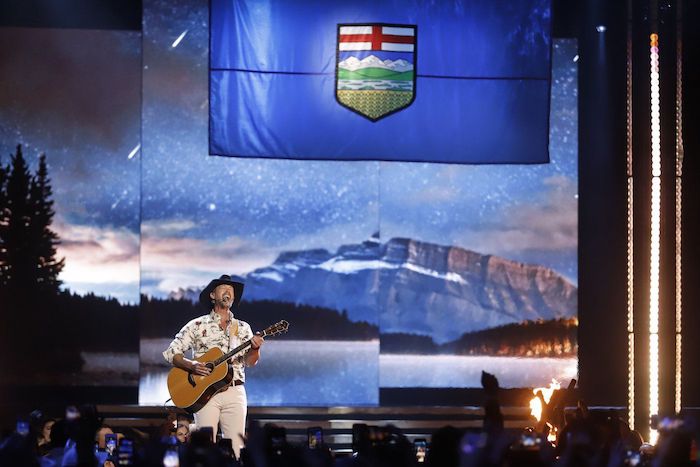Business
What Inter-Provincial Migration Trends Can Tell Us About Good Governance

It turns out we move a great deal less than our American neighbors
Government policies have consequences. Among them is the possibility that they might so annoy the locals that people actually get up and head for the exit. Given how parting can be such sweet sorrow (and how it’s a pain to lose out on all that revenue from provincial income, property, and sales tax), legislatures generally prefer to keep their citizens on this side of the door.
Nevertheless, migration happens. And when enough people do it at the same time, they sometimes leave economic and social clues behind waiting to be discovered. This graph represents net migrations since 1971 into and out of the four largest provinces:
The Audit is a reader-supported publication. To receive new posts and support my work, consider becoming a free or paid subscriber.
It may just be possible to make out some broad patterns here. Quebec has never had a net inbound migration year (although there’s been plenty of immigration to Quebec from outside of Canada). But nothing matches the mass exodus of anglophones due to concerns over language and separation in the 1970s.
Curiously it seems that Alberta and British Columbia received far more migrants than Ontario around that time – although the actual numbers tell us that they were more likely to have come from Saskatchewan and Ontario than Quebec. By contrast, most disillusioned Quebecers found their way to Ontario. Besides the 70s, Alberta also enjoyed inbound spikes in the mid-90s, mid-00s, and early 10s. And it looks like they’re in the middle of another boom cycle as we speak.
The real value of all this data however, is in using it to test causation hypotheses. In other words, can statistical analysis tell us what it was that caused the migrations? And are some or all of those causes the result of government policy choices? Here are some possibilities we’ll explore:
- Household income trends
- Government debt
- Crime rates
- Healthcare costs
- Housing costs
Right off the top I’ll come clean with you: there’ll be no smoking gun here. I could find no single historical measure that came close to explaining migration patterns. However I was able to confidently discard some theories. That’s a win I guess. And other numbers did hint to intriguing possibilities.
Inter-provincial variations in household income, crime rates (specifically murder rates), healthcare costs (including prescriptions, eye care, and dental care), and even housing affordability had no measurable impact on migration. This was true for both correlation coefficients and lag analysis (where we looked at migration changes in the years following an economic event).
Rising unemployment had, at best, a minimal impact on outbound migration. And even then, it was only noticeable for Alberta and Prince Edward Island.
Of all the metrics I explored, the only one that might have had a serious influence in migration was provincial government budget deficits.
Folks from Alberta, New Brunswick, and Newfoundland all responded to growing government debt by clearing out. Now, I doubt this was their way to telling the government what they really thought about bad fiscal management. Rather, people probably decided to move to greener pastures in response to the ripple-effect consequences of deficits, like higher taxes, reduced social services, and deteriorating infrastructure.
I suspect that part of the reason I wasn’t able to find any strong connections between those metrics and migration patterns is because there really isn’t all that much migration going on in the first place.
Take Ontario’s record net population loss of 31,018 residents back in 2021. That may sound like a lot of people, but it’s actually just a hair over two-tenths of one percent of the total Ontario population. And even Quebec’s epic 1979 loss of 46,429 people was still nowhere near one percent. It was 0.7117456, to be precise. Those aren’t significant numbers.
When so few people choose to move, it’s probably because there’s nothing on the macro level going on that’s pushing them. Those who do go, probably do it primarily for personal reasons that just won’t show up in population-scale data.
There’s also the very real possibility that Canadians are smart enough to realize that things probably won’t be any better over there than they already are right here. Fewer than two-thirds of one percent of Ontarians left for other provinces in 2023, while only around one-third of a percent gave up on Quebec.
By contrast, annual state-to-state migration figures in the U.S. typically range between 1 percent to 5 percent of each state’s population. In 2022, that added up to 8.2 million people, according to the Census Bureau.
In the market for bespoke data analysis?
Business
Loblaws Owes Canadians Up to $500 Million in “Secret” Bread Cash

Yakk Stack
(Only 5 Days Left!) Claim Yours Before It’s GONE FOREVER
Hey, all.
Imagine this…you’re slicing into that fresh loaf from Loblaws or just making a Wonder-ful sammich, the one you’ve bought hundreds of times over the years, and suddenly… ka-ching!
A fat check lands in your mailbox.
Not from a lottery ticket, not from a side hustle – from the very store that’s been quietly owing you money for two decades of illegal price fixing.
Sound too good to be true?
It’s real.
It’s court-approved.
And right now, on December 7, 2025, you’ve got exactly 5 days to grab your share before the door slams shut. Don’t let this slip away – keep reading, feel that spark of possibility ignite, and let’s get you paid.
Back in 2001, you were probably juggling work, kids, or just surviving on that weekly grocery run. Little did you know, while you were reaching for the President’s Choice white bread or those golden rolls, Loblaws and their cronies were playing a sneaky game of price-fixing. They jacked up the cost of packaged bread across Canada – every loaf, every bun, every sneaky sandwich slice. For 20 years. From coast to coast to coast.
And now…the courts have spoken. $500 million in settlements to make it right. That’s not pocket change – that’s your money, recycled back into your life.
Given the number of people who will be throwing in a claim…this ain’t gunna be life-changing cash…but also, given the cost of food in Canada, it’s better than sweet fuck all, which you will receive by NOT doing this.
If you’re a Canadian resident (yep, that’s you, unless you’re in Quebec with your own sweet deal), and you’ve ever bought bread for your family – not for resale, just real life – between January 1, 2001, and December 31, 2021… you’re in.
No receipts needed.
No fancy proofs.
Just you, confirming your story, and boom – eligible.
Quick check: Were you under 18 back then?
Or an exec at Loblaw?
Nah, skip it.
But for the rest of us everyday schleps…Jackpot.
Again…the clock’s ticking on this.
Claims opened on September 11, 2025, and slam shut on December 12, 2025.
That’s this Friday.
Payments roll out in 2026, 6-12 months later, straight to your bank or mailbox.
Here’s what you need to do…
- Breathe deep, click → HEREQuebec frens →HERE
- 10 second form that’s completed by your autofill…30 seconds off of a mobile device.
- Hit submit and wait for that sweet cash to hit your account.
Again…this won’t be life saving money and most certainly ain’t gunna hit your account before Christmas.
And before you go out an Griswald yourself into a depost on pool in the backyard…you may only end up with enough cash for the Jam-of-the-Month…the gift that truly does give, all year round…just be a little patient.
If you end up with a couple of backyard steaks in time for summer…
Some treats for the children or grandchildren…
Maybe just a donation to the foodbank…
This is what’s owed to you. Your neighbors. Friends. Family.
Take advantage!
Banks
To increase competition in Canadian banking, mandate and mindset of bank regulators must change

From the Fraser Institute
By Lawrence L. Schembri and Andrew Spence
Canada’s weak productivity performance is directly related to the lack of competition across many concentrated industries. The high cost of financial services is a key contributor to our lagging living standards because services, such as payments, are essential input to the rest of our economy.
It’s well known that Canada’s banks are expensive and the services that they provide are outdated, especially compared to the banking systems of the United Kingdom and Australia that have better balanced the objectives of stability, competition and efficiency.
Canada’s banks are increasingly being called out by senior federal officials for not embracing new technology that would lower costs and improve productivity and living standards. Peter Rutledge, the Superintendent of Financial Institutions and senior officials at the Bank of Canada, notably Senior Deputy Governor Carolyn Rogers and Deputy Governor Nicolas Vincent, have called for measures to increase competition in the banking system to promote innovation, efficiency and lower prices for financial services.
The recent federal budget proposed several new measures to increase competition in the Canadian banking sector, which are long overdue. As a marker of how uncompetitive the market for financial services has become, the budget proposed direct interventions to reduce and even eliminate some bank service fees. In addition, the budget outlined a requirement to improve price and fee transparency for many transactions so consumers can make informed choices.
In an effort to reduce barriers to new entrants and to growth by smaller banks, the budget also proposed to ease the requirement that small banks include more public ownership in their capital structure.
At long last, the federal government signalled a commitment to (finally) introduce open banking by enacting the long-delayed Consumer Driven Banking Act. Open banking gives consumers full control over who they want to provide them with their financial services needs efficiently and safely. Consumers can then move beyond banks, utilizing technology to access cheaper and more efficient alternative financial service providers.
Open banking has been up and running in many countries around the world to great success. Canada lags far behind the U.K., Australia and Brazil where the presence of open banking has introduced lower prices, better service quality and faster transactions. It has also brought financing to small and medium-sized business who are often shut out of bank lending.
Realizing open banking and its gains requires a new payment mechanism called real time rail. This payment system delivers low-cost and immediate access to nonbank as well as bank financial service providers. Real time rail has been in the works in Canada for over a decade, but progress has been glacial and lags far behind the world’s leaders.
Despite the budget’s welcome backing for open banking, Canada should address the legislative mandates of its most important regulators, requiring them to weigh equally the twin objectives of financial system stability as well as competition and efficiency.
To better balance these objectives, Canada needs to reform its institutional framework to enhance the resilience of the overall banking system so it can absorb an individual bank failure at acceptable cost. This would encourage bank regulators to move away from a rigid “fear of failure” cultural mindset that suppresses competition and efficiency and has held back innovation and progress.
Canada should also reduce the compliance burden imposed on banks by the many and varied regulators to reduce barriers to entry and expansion by domestic and foreign banks. These agencies, including the Office of the Superintendent of Financial Institutions, Financial Consumer Agency of Canada, Financial Transactions and Reports Analysis Centre of Canada, the Canada Deposit Insurance Corporation plus several others, act in largely uncoordinated manner and their duplicative effort greatly increases compliance and reporting costs. While Canada’s large banks are able, because of their market power, to pass those costs through to their customers via higher prices and fees, they also benefit because the heavy compliance burden represents a significant barrier to entry that shelters them from competition.
More fundamental reforms are needed, beyond the measures included in the federal budget, to strengthen the institutional framework and change the regulatory mindset. Such reforms would meaningfully increase competition, efficiency and innovation in the Canadian banking system, simultaneously improving the quality and lowering the cost of financial services, and thus raising productivity and the living standards of Canadians.
-

 Focal Points1 day ago
Focal Points1 day agoPharma Bombshell: President Trump Orders Complete Childhood Vaccine Schedule Review
-

 Business7 hours ago
Business7 hours agoWhy Does Canada “Lead” the World in Funding Racist Indoctrination?
-

 Alberta1 day ago
Alberta1 day agoA Memorandum of Understanding that no Canadian can understand
-

 Censorship Industrial Complex1 day ago
Censorship Industrial Complex1 day agoFrances Widdowson’s Arrest Should Alarm Every Canadian
-

 Alberta1 day ago
Alberta1 day agoPremier Smith: Canadians support agreement between Alberta and Ottawa and the major economic opportunities it could unlock for the benefit of all
-

 Opinion1 day ago
Opinion1 day agoCountry music star Paul Brandt asks Parliament to toughen laws against child porn
-

 Automotive17 hours ago
Automotive17 hours agoTrump Deals Biden’s EV Dreams A Death Blow
-

 Automotive17 hours ago
Automotive17 hours agoCanada’s EV Mandate Is Running On Empty















